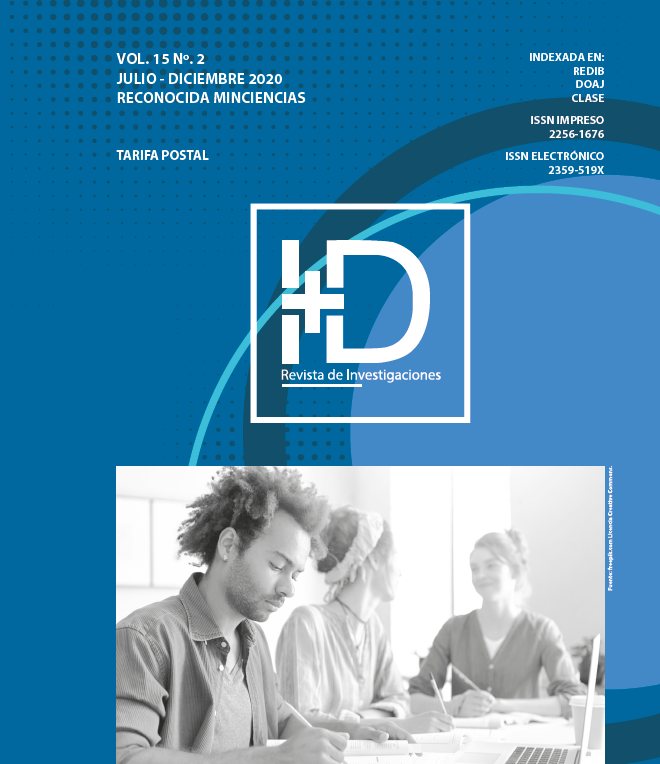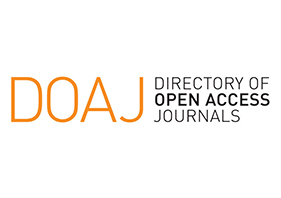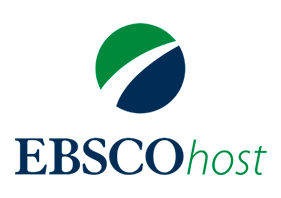CEREBR-IO: Playful activity for teaching and strengthening the subject Investigación de Operaciones
DOI:
https://doi.org/10.33304/revinv.v15n2-2020013Keywords:
Active learning, operations research, playful, linear programmingAbstract
This work aims to contribute to the teaching-learning methodology of the subject Investigación de Operaciones I, through the design and application of a playful activity. To this end, the Gamification Canvas model was used in the design. To test the relevance and acceptance of play in the teaching-learning process in both students and teachers, an experimental study was carried out through the execution of a pilot test with a sample of 16 students and the application of a questionnaire upon completion. As a result, “CEREBR-IO” was developed, an activity that supports the process of understanding and appropriating linear programming, especially the process of mathematical modeling and key theoretical concepts, which, according to the comments of the participating students in the validation, it allows to complement the masterclasses in a positive way, making them more stimulating and attractive compared to the traditional classes.Downloads
References
Acosta-Medina, J. K., Torres-Barreto, M. L., & Alvarez-Melgarejo, M. (2020). Literature mapping about gamification in the teaching and learning processes. Revista ESPACIOS, 41(11), 26. Retrieved from https://www.revistaespacios.com/a20v41n11/20411126.html
Acosta-Medina, J. K., Torres-Barreto, M. L., Alvarez-Melgarejo, M., & Paba-Medina, M. C. (2020). Gamificación en el ámbito educativo: Un análisis bibliométrico. I+D Revista de Investigaciones, 15(1), 30–39.
Arévalo, A., Arias, C., Calpa, J., Pérez, N., & Sánchez, C. (2019). ¿Te atreves a brillar con la I.O.? Séptimo Encuentro de La Red Iddeal. Retrieved from https://peewah.co/events/septimo-encuentro-nacional-red-iddeal
Biggs, J. (2006). Calidad del aprendizaje universitario. (2da edició). Retrieved from https://barajasvictor.files.wordpress.com/2014/05/libro-j-biggs.pdf
Chediak, F. A. (2013). Investigación de Operaciones. Volumen I. (Tercera ed). Universidad de Ibagué.
Davila, J., & Calpa, J. (2016). Desarrollo de actividades de aprendizaje activo con enfoque lúdico para el complemento del proceso de enseñanza aprendizaje de la línea académica administración de operaciones (Universidad Autonoma de Occidente). Retrieved from https://sitios.uao.edu.co/docentes/wp-content/uploads/sites/26/2016/07/InformeFinaldeproyectodeinvestigacion.docx-2.pdf
Echeverri, J., & Gómez, J. (2009). Lo lúdico como componente de lo pedagógico, la cultura, el juego y la dimensión humana. In Marco teórico investigación sobre la dimensión Lúdica del maestro en formación 2009. Retrieved from http://blog.utp.edu.co/areaderecreacionpcdyr/files/2012/07/LO-LUDICO-COMO-COMPONENTE-DE-LO-PEDAGOGICO.pdf
Escamilla, J., Fuerte, K., Venegas, E., Fernández, K., Elizondo, J., & Román, R. (2016). Gamificación. Observatorio de Innovación Educativa Del Tecnológico de Monterrey, pp. 1–36. Retrieved from http://eduteka.icesi.edu.co/pdfdir/edutrends-gamificacion.pdf
Freepik.com. (2014). Dibujo de calavera vector gratuito. Retrieved from Freepik.com website: https://www.freepik.es/vector-gratis/dibujo-calavera_724076.htm
Freepik.com. (2016). Peones del ajedrez de colores colocados en fila Foto gratis. Retrieved from Freepik.com website: https://www.freepik.es/foto-gratis/peones-ajedrez-colores-colocados-fila_959172.htm
Freepik.com. (2018). Dólar vector gratuito. Retrieved from Freepik.com website: https://www.freepik.es/vector-gratis/dolar_2900482.htm
Freepik.com. (2019). Conjunto de dibujos animados de cerebro Vector Premium. Retrieved from Freepik.com website: https://www.freepik.es/vector-premium/conjunto-dibujos-animados-cerebro_5096282.htm
Freepik.com. (2020). Cerebro corriendo con guantes. Retrieved from Freepik website: https://www.freepik.es/search?dates=any&format=search&page=1&query=cerebro corriendo con guantes&sort=popular
Galvis, A. (2013). Ambientes educativos CLIC -creativos, lúdicos, interactivos y colaborativos–para aprender en la era de la información. Retrieved from https://books.google.com.co/books?hl=es&lr=&id=ry2RDwAAQBAJ&oi=fnd&pg=PA63&dq=uso+de+micromundos+en+la+ludica&ots=-5lvAzkhfl&sig=ueIROVnnzoZSkgxSSBpmEelFQ6I&redir_esc=y#v=onepage&q&f=false
Hérnandez Cruz, H. (2015). La lúdica en el aula de ingeniería. Revisión de experiencias. Revista Ingeniería, Matemáticas y Ciencias de La Información, 2(3), 67–71. Retrieved from https://urepublicana.edu.co/ojs/index.php/ingenieria/article/view/239
Hiller, F. S., & Lieberman, G. J. (2017). Introducción a la investigaciòn de Operaciones (Novena). https://doi.org/10.2307/j.ctt2111g6q.5
Moyano, B. C., Morató, M. M., & Santos, J. (2019). La Gamificación en la educación superior. Aspectos a considerar para una buena aplicación. Pedagogías Emergentes En La Sociedad DIgita, 21.
Ortiz-Colón, A.-M., Jordán, J., & Agredal, M. (2018). Gamificación en educación: una panorámica sobre el estado de la cuestión. Educação e Pesquisa, 44(0). https://doi.org/10.1590/s1678-4634201844173773
Pérez, J., Jaramillo, P., & Moreno, L. (2010). El comercio de canicas: herramienta de apoyo para la enseñanzaaprendizaje práctico de la programación lineal. Revista Facultad de Ingeniería UCV, 25(1), 43–52. Retrieved from http://ve.scielo.org/scielo.php?script=sci_arttext&pid=S0798-40652010000100005
Rivera, R. D., & Pinzón, T. M. (2006). La lúdica en la investigación de operaciones: El caso del fabricante y el transportador. Páginas: Revista Académica e Institucional de La UCPR, (74).
Rodríguez Cepeda, R. (2018). Los modelos de aprendizaje de Kolb, Honey y Mumford: implicaciones para la educación en ciencias. Sophia, 14(1), 51–64. https://doi.org/10.18634/sophiaj.14v.1i.698
Semana. (2015). Los universitarios no están preparados para el mercado laboral. Retrieved from https://www.semana.com/educacion/articulo/posibilidades-laborales-de-los-universitarios/447900-3
Torres, L. M. (2019). La importancia de la lúdica como estrategia didáctica en el proceso de enseñanza y aprendizaje en la educación superior (Universidad Militar Nueva Granada). Retrieved from https://repository.unimilitar.edu.co/bitstream/handle/10654/31929/TorresForeroLuisaMaria 2019.pdf?sequence=1
Torres, M., Paz, K., & Salazar, F. G. (2019). Métodos de recolección de datos para una investigación. (pp. 1–21). pp. 1–21. Retrieved from https://www.academia.edu/16383192/URL_03_BAS01
Zúñiga, G. (1998). La pedagogía lúdica: una opción para comprender. V Congreso Nacional de Recreación. Retrieved from http://www.redcreacion.org/documentos/congreso5/GZuniga.htm












